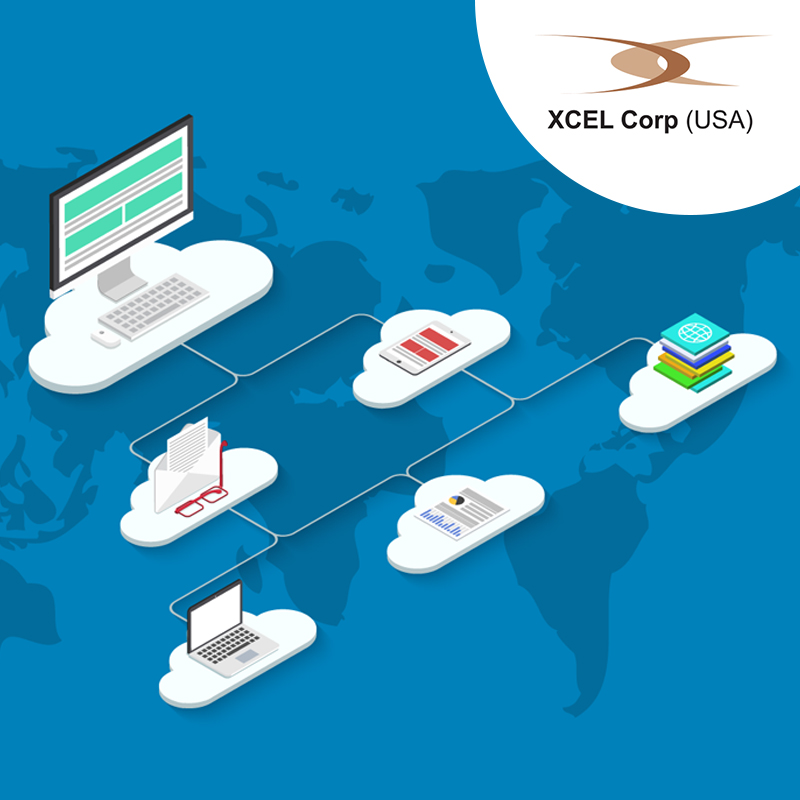
Enterprises implementing the cloud must understand that the cloud is a means to a successful company objective rather than the end itself. A complete standardization and automation strategy is the best way to achieve IT modernization. With the adoption of cloud computing increasing fast, it is predicted that cloud-oriented spending is only going to augment the rate of general IT expenses further up to six times more, through 2020. SaaS or Software-as-a-Services is being implemented by larger enterprises along with cloud-first strategies. But there are several who are still besieged while trying to leverage cloud for their enterprise systems.
Cloud Adoption
Reducing costs, mitigating risks, and achieving complete scalability of your database capabilities can be accomplished by strategically, by adopting the cloud. Depending upon the depth of the adoption, there are various degrees of cloud computing required within an organization. Although, the decision of espousing cloud-based technologies would require identifying potential security controls, thefts and the data and applications that particularly require security. You must get an insight into the availability of enterprise-ready cloud services and the maturity of best practices during cloud adoption while making space to assess compliance.
At XCEL Corp, we take the following measures to ensure the safety and accountability of data and applications across cloud services
As cloud service providers, we stringently match our security capabilities with security requirements that of the client organization
We come with a long history of transparency and security-related practices
Furthermore, our experts come with a good understanding of the technical aspects of data and traffic flow, along with their demarcated roles and responsibilities
Finally, professionals at XCEL Corp come with an in-depth understanding of certifications and compliances that can be easily leveraged
Factors involved in the success of cloud implementation
Several critical factors have to be considered when an organization plans to shift to cloud computing. Specific goal-setting activities along with clarity of vision must be performed to align the business needs of the company with the cloud. Alongside, it is also important that you choose the right kind of experts or providers to accomplish your vision. Cloud implementation comes with varying demands at several stages of the project. Repeated adjustments are expected from time to time depending upon requirements. Select the right kind of application that is required to move to the cloud and work with the provider to understand capabilities and how best the provisioning company can help achieve your business needs, along with your vision. Here are some of the major contributors to the success of cloud implementation.
Pilot design
To understand the various factors involved in the adoption of cloud computing it is extremely important to design a roadmap that will provide the proof of concept for the project that outlines the viability of adoption of the cloud for an organization. You must also be careful to draft a beginning and an end to the timeline, the resources to be utilized and the fastest and least risky route to the destination. Before adopting the cloud, we must also understand the current capabilities of the organization and if the infrastructure is virtualized and the percentage of services that can be operated for the purpose. Not every organization starts from scratch and that is why it is important to consider the stage at which cloud computing should be implemented. Applications must be tested, and an overall picture should be provided to management so that the organizational goals and the cloud abilities can be matched.
Syncing your organizational goals with cloud competences
Whether it is adopting new technology, increasing investments or product development, all of these activities require senior management involvement and decision-making. It is also imperative to see to it that their decisions are of sound reasoning, justified and contribute towards the development of the organization. With the adoption of cloud computing, they must weigh every option and if their choices are in alignment with executive goals. The objectives should not be limited to only server provisioning or scaling up according to requirements, it should also include cost reduction, ensuring better returns on investments and freeing up of IT resources to place them on the project. Cloud adoption would also mean staying constantly connected to the cloud.
Appropriate choice of applications
The outcome of the pilot project is extremely critical if the management wants to consider the organizational benefits of cloud computing. The successful adoption of the cloud is also dependent upon the choice of application. Casting all the applications is not a suitable option considering that this is a pilot. At the same time, you must ensure that you make good choices such as batch programs and disaster recovery solutions, and internet-facing applications, or application development systems, websites, e-commerce systems and much more. The applications are bound to move eventually, but they need not be a part of the pilot. Applications that have less impact on the organizations, should not be considered first because these demonstrate the least business value.
Advantages of automated cloud IT processes
Traditionally, enterprise applications would be designed to run on tailored and configured IT systems that required a highly customized storage system and a range of network resources. An army of administrators was required just to keep the systems up and running, besides updating them constantly. Manually, newer capacities had to be added, where demands were high and quick fixes would only lead to lower all-around performance. Overheads would also be required for maintenance, testing, and integration. Therefore, enabling the cloud would not only save on costs but would also minimize time to market and drastically improve operational and service levels.
Some of the benefits of cloud adoption are:
Reduction in overhead costs by about 30 to 40%
Optimizing the usage of IT assets
Scaling processes when required
Improving the flexibility of IT to meet business requirements
High-quality services through standardized self-healing solutions thus reducing IT incidents by at least 70%
XCEL Corp
XCEL Corp provides a range of cloud services such as server management, licensing, patching and much more. We also help you deploy new servers and applications, assist in back-up and recovery services and even offer security and auditing services. Reach out to our consultants for more information.


